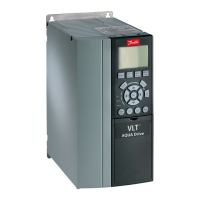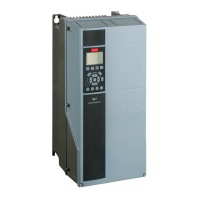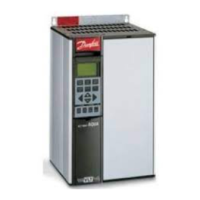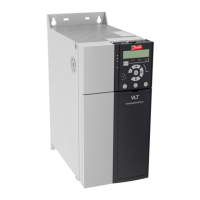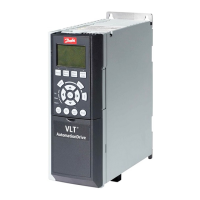20-82 PID Start Speed [RPM]
Range: Function:
Application
dependent*
[Application dependant]
20-93 PID Proportional Gain
Range: Function:
0.50 N/A* [0.00 - 10.00 N/A] The proportional gain indicates the number of times the error between the set point and the feed-
back signal is to be applied.
If (error x gain) jumps with a value equal to that set in par. 20-14
Maximum Reference/Feedb.
, the PID controller will try to change the output speed
equal to that set in par. 4-13
Motor Speed High Limit [RPM]
/par. 4-14
Motor Speed High Limit [Hz]
but in practice of course limited by this setting.
The proportional band (error causing output to change from 0–100%) can be calculated by means of the formula:
(
1
Proportional
Gain
)
×
(
Max
Reference
)
NOTE!
Always set the desired for par. 20-14
Maximum Reference/Feedb.
before setting the values for the PID controller in par. group 20-9*.
20-94 PID Integral Time
Range: Function:
20.00 s* [0.01 - 10000.00 s] Over time, the integrator accumulates a contribution to the output from the PID controller as long
as there is a deviation between the reference/setpoint and feedback signals. The contribution is
proportional to the size of the deviation. This ensures that the deviation (error) approaches zero.
Quick response on any deviation is obtained when the integral time is set to a low value. Setting it
too low, however, may cause the control to become unstable.
The value set is the time needed for the integrator to add the same contribution as the proportional
part for a certain deviation.
If the value is set to 10,000, the controller will act as a pure proportional controller with a P-band
based on the value set in par. 20-93,
Proportional Gain
. When no deviation is present, the output
from the proportional controller will be 0.
VLT AQUA High Power Instruction Manual
5 How to program the adjustable frequency
drive
MG.20.P3.22 - VLT
®
is a registered Danfoss trademark
5-37
5
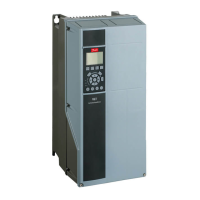
